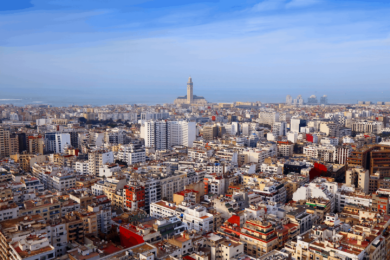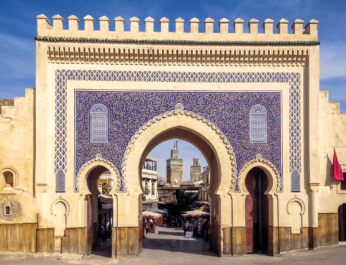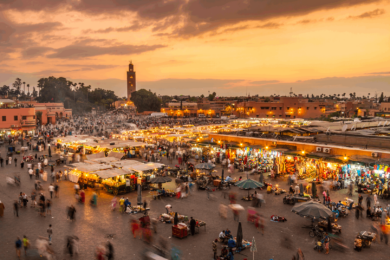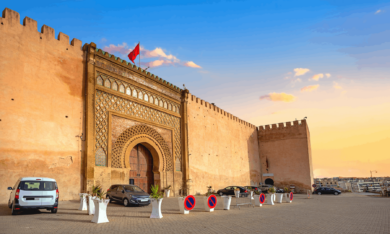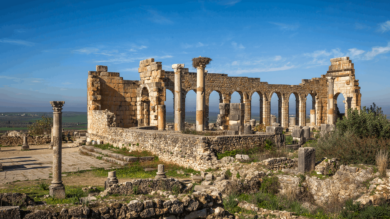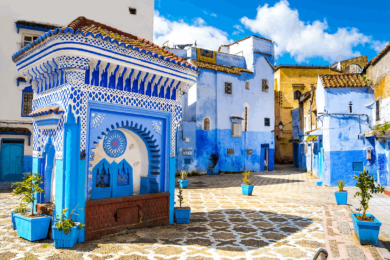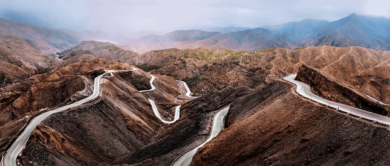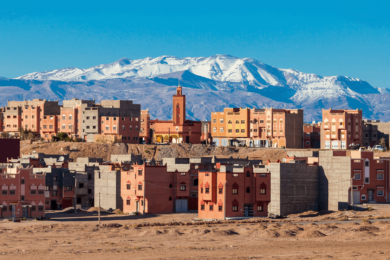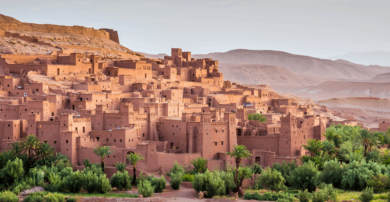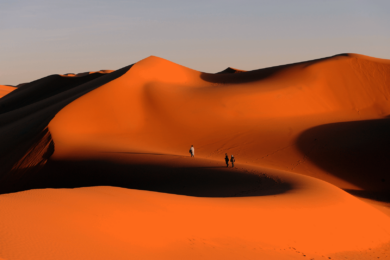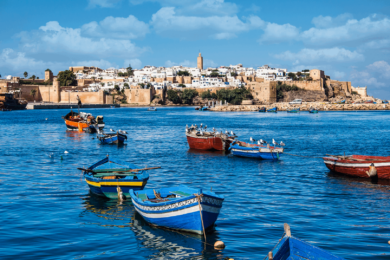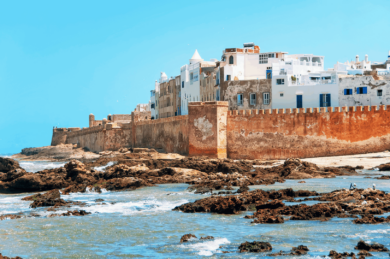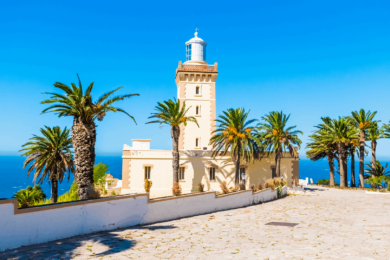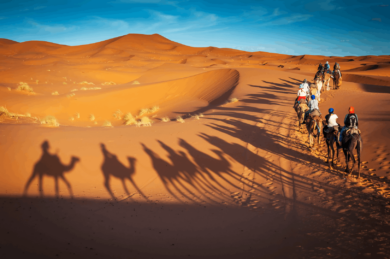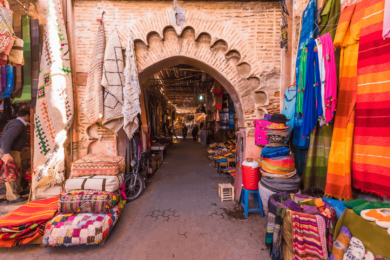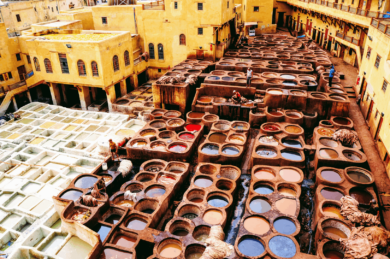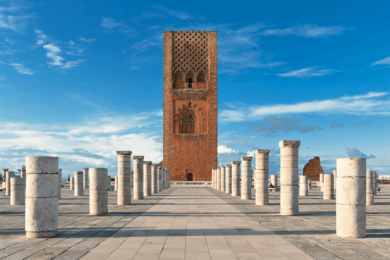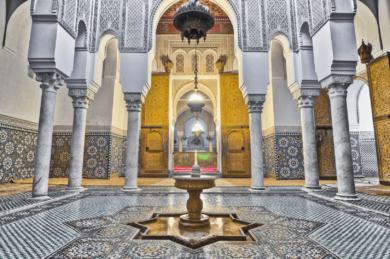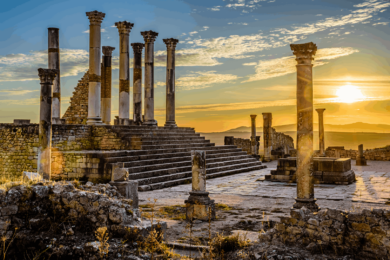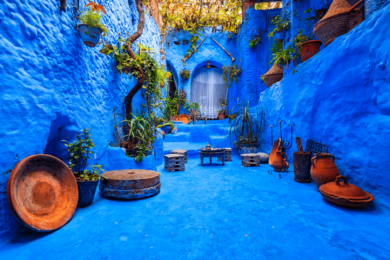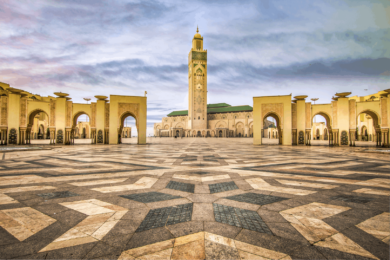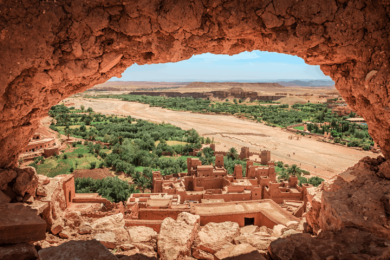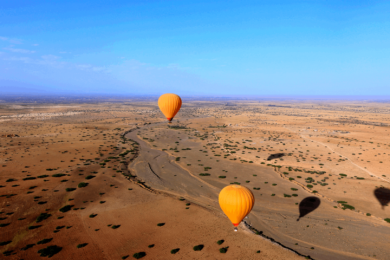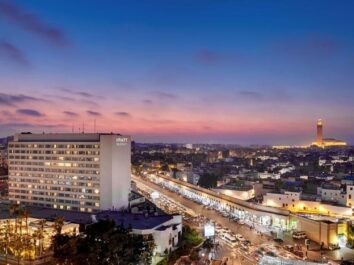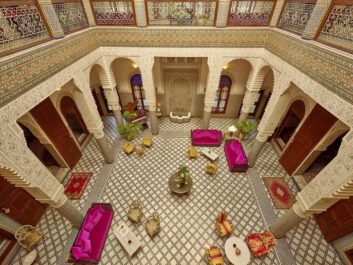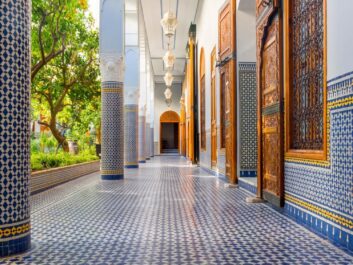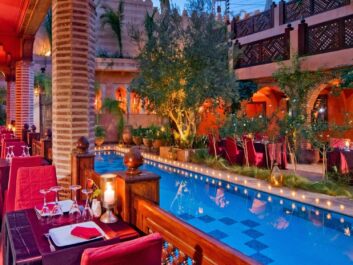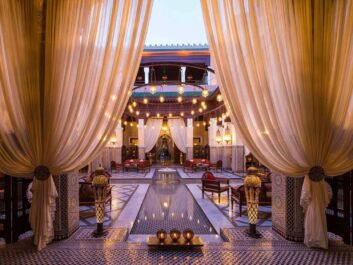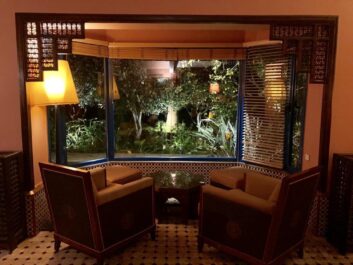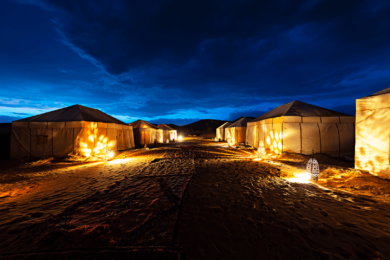Located on Morocco's Atlantic coast, Casablanca is the country's largest city and busiest port with a population of around 3.7 million. The most famous monument in the city is the King Hassan Mosque, the largest functioning mosque in Africa, with the world's second tallest minaret at a height of 210 meters (689 ft.), and a maximum capacity of 105,000 worshippers. Most people associate the city with the 1945 romantic film of the same title, starring Ingrid Bergman and Humphrey Bogart.
Founded in the 8th-9th century CE, Fez is the oldest of the four imperial cities of Morocco. The city has two old medina quarters, the Fes el-Bali, the oldest walled part of the city, and Fes el-Jdid, which is also the location of the Royal Palace. The third part of Fez, called the Ville Nouvelle, was founded during the French colonial era. The city is also famous for the Choura tannery, which dates back to the 11th century, and is considered one of the oldest tanneries in the world.
Founded in 1070, Marrakesh is the second of Morocco's four imperial cities. The walls of the city, constructed in red sandstone around 1122-1123, give the city the nickname of "the Red city" or "Ochre city." It is famous for its colorful souks, Moorish architecture, intimate gardens, boutique hotels, mouth-watering cuisine, and many architectural jewels. The central medina quarter is a UNESCO World Heritage site, and the world famous Plaza Jamaa El Fna is typically buzzing with activity.
Founded in the 11th century as a military settlement, Meknes is the third imperial city of Morocco. It became the capital of Morocco briefly from 1672-1727, and during this period the Sultan Moulay Ismail built a massive imperial palace complex. The most famous attractions in the town are the grandiose Bab el-Mansour gateway, the medina, and the nearby towns of Volubilis, Morocco's most famous Roman ruins, and Moulay Idriss, named after the country's most venerated saint.
Located about 33 km north of Meknes, Volubilis is a partly excavated Berber city, an important Roman outpost, and the best-preserved archaeological site in Morocco. It is commonly considered to be the ancient capital of the kingdom of Mauritania. Declared a UNESCO World Heritage site in 1997, it is famous for the many beautiful mosaics preserved in situ. The site is most magical either early in the morning or around dusk, when the last rays of the sun light the ancient columns.
Founded in 1471 as a small kasbah (fortress), Chefchaouen, which translates to "blue pearl," is an artsy village known for its blue houses and alleyways which lend it a somewhat ethereal and magical atmosphere. There are several theories for why the walls are painted blue. The village is the perfect place to relax at the great restaurants and traditional hotels (riads), walk around, explore, and take incredible photographs.
The Atlas Mountains extend some 2,500km across northwestern Africa, spanning Morocco, Algeria and Tunisia. The three ranges of the Atlas mountains in Morocco, the Middle Atlas, High Atlas and Little Atlas or Anti-Atlas, separate the Atlantic and Mediterranean coastline from the Sahara Desert. The High Atlas range, the most visited, is the highest mountain range in Africa, and home to Mount Toubkal, which is nearly 14,000 feet high.
Ouarzazate (war-zazat), nicknamed the "door of the desert," is a city in the south-central region of Morroco. Historically, the Taourirt Kasbah in the town was a trading location for people from the Atlas, Draa and Dadès Valleys. It is also the home of The ‘Ouallywood’ movie studios where several famous films like Lawrence of Arabia (1962), The Last Temptation of Christ (1988), The Mummy (1999), Gladiator (2000), and Kingdom of Heaven (2005) were shot.
The historic ksar (fortified village) of Ait Benhaddou, close to Ouarzazate, dates back to the 11th century and the Almoravid period, but none of the current buildings are believed to date before the 17th century. It is considered to be a great example of Moroccan earthen clay architecture, and is recognized as a UNESCO World Heritage Site. Several famous Hollywood films have been shot here including Gladiator, The Mummy, and The Living Daylights (James Bond).
Located on the edge of the Sahara desert, Merzouga serves as the gateway to the famous Erg Chebbi sand dunes that shimmer in glowing hues of gold and red with the shifting light. The spectacular desert landscapes best seen by camel safaris or off-road vehicles, the carpet of stars at night, and the warmth of the traditional Berber villages, make Merzouga and Erg Chebbi an unforgettable destination.
Founded in the 12th century, Rabat is the most recent of the four imperial cities of Morocco, and Morocco’s political and administrative capital since 1955, when the country achieved independence from the French. Located on the Atlantic ocean, at the mouth of the river Bou Regreg, the city has a well preserved medina that is listed a World Heritage site, a clean central beach, an intact kasbah, and a large, international diplomatic community.
Known as the "Wind City of Africa" for its famous coastal wind, the beautifully named Alizee, or Taros in Berber, Essaouira (essa-weera) is an enchanting town with a vibrant blue and white medina, sand-colored ramparts, imposing stone gates, spice-scented lanes, palm-lined avenues, a colorful port filled with bobbing fishing boats, and a beautiful beach. As indicated by its name, which means "little picture" in Arabic, the town is a dream location for a painter.
Separated from the European continent, and Spain, by only the 20 miles of the Straits of Gibraltar, Tangier is an interesting cosmopolitan mix of European and African influences. In the 1940s and 50s, several famous writers like Truman Capote and Tennessee Williams spent time here. Today the city is more modern, but there is also a medina (old walled city) that has alleyways filled with shops and teahouses, and a Kasbah, located high on a hill above the city, that offers great views of the ocean.
